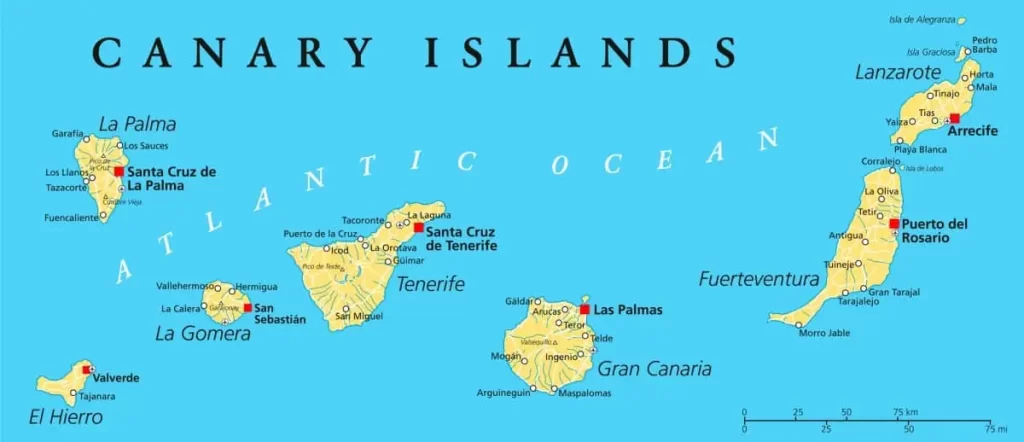
The journey to Tenerife from Cabo Verde is about 870 nautical miles; that gave us another two days on the open water, traveling along the coast of West Africa. Tenerife is in the Canary Islands, an archipelago in the Atlantic off the west coast of Africa. It is the southernmost Autonomous Community of Spain. Tenerife is the largest of the seven main islands of the archipelago. In ancient times the island chain was often referred to as “The Fortunate Isles.”
For centuries the Canary Islands were shrouded in a mist of magic and legend. Some people believed that they were the uppermost peaks of the lost continent of Atlantis of which Plato wrote. Others associated them with the Elysian Fields. Plutarch gave them the name of the Fortunate Islands.
Canary does not come from the bird. Rather it comes from the Latin “Canariae Insulae” meaning Island of the Dogs. Explorers heard what sounded like dogs barking when they were on the islands. The sound probably came from monk seals that were abundant.
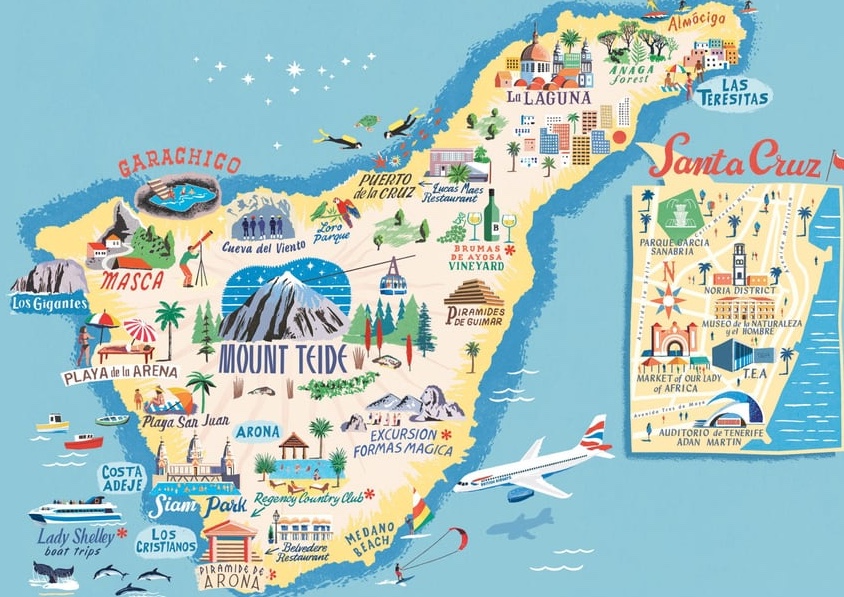
Tenerife is the most extensive island in the Canaries. It has the most land and largest population. Its capital is Santa Cruz de Tenerife. The second largest city San Cristobal de La Laguna, a World Heritage Site, was the original capital and is home to the oldest university in the Canary Islands. Mt. Teida, on Tenerife, another World Heritage Site, is the highest peak in Spain at 12,188 ft. as well as in the Atlantic islands.
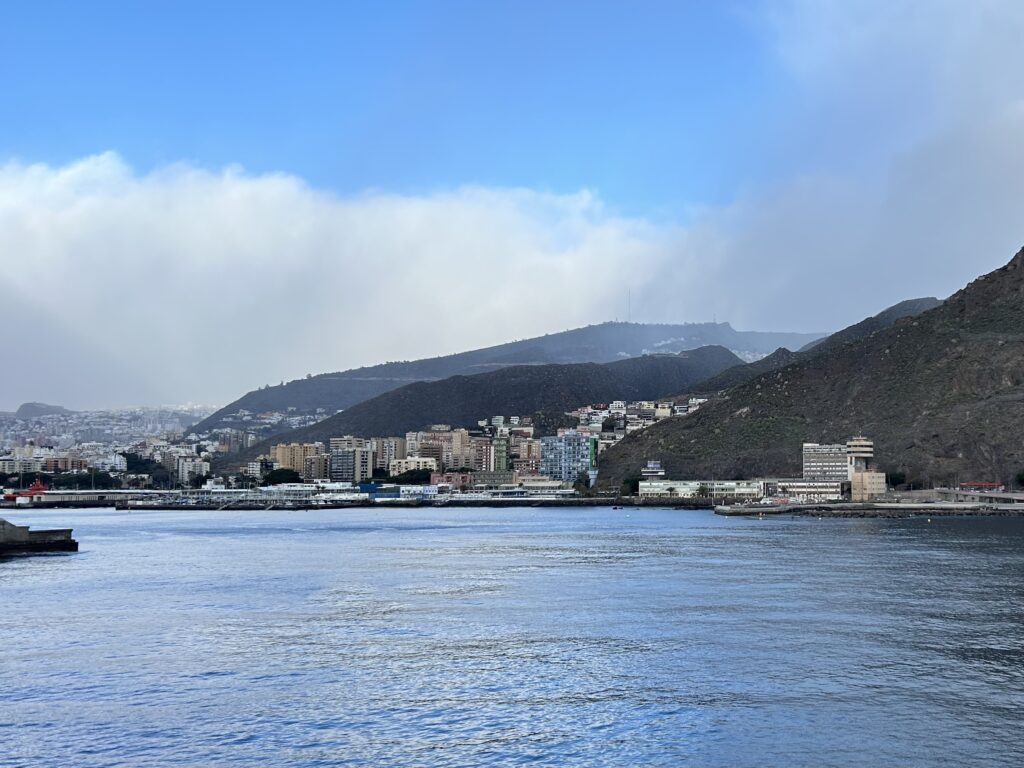
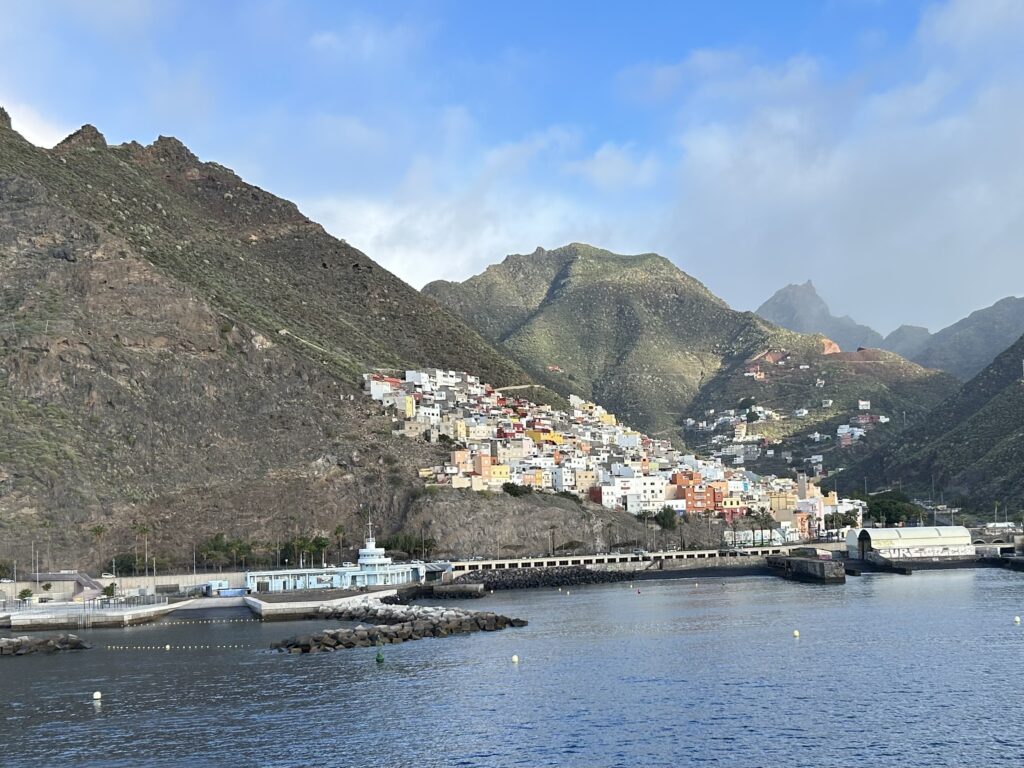
My tour was of the Anaga Mountains and Forest. We began with a drive to the Anaga Mountains with stops at La Jardina and Cruz Del Carmen viewpoint. La Jardina Viewpoint is one of the first that we came to. From here you can see the panoramic view of the western side of Tenerife, including farmlands and mall villages, the city of La Laguna and Mount Teide. Cruz del Carmen is an old crossroads between the village of Anaga and the city of La Laguna. It is an excellent vantage poing with an amazing view. From here you can see the neighborhood of La Vega Lagunero and the city of La Laguna with Mt. Teide as a backdrop. Unfortunately it was raining, so the views were shrouded in clouds and fog.
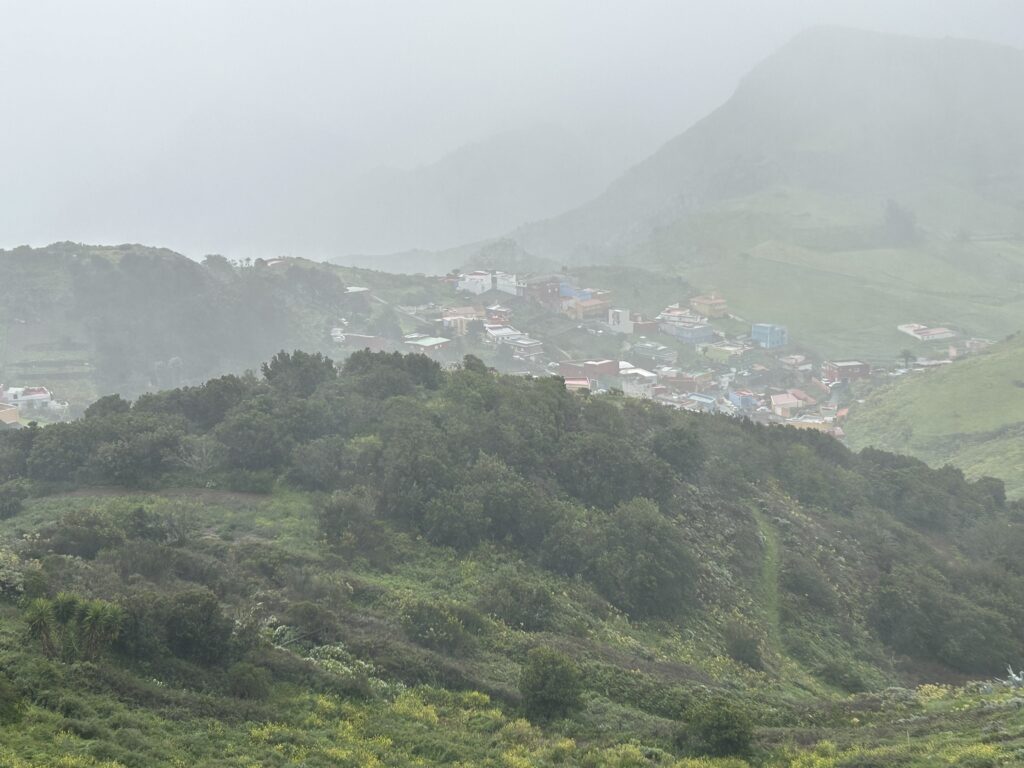
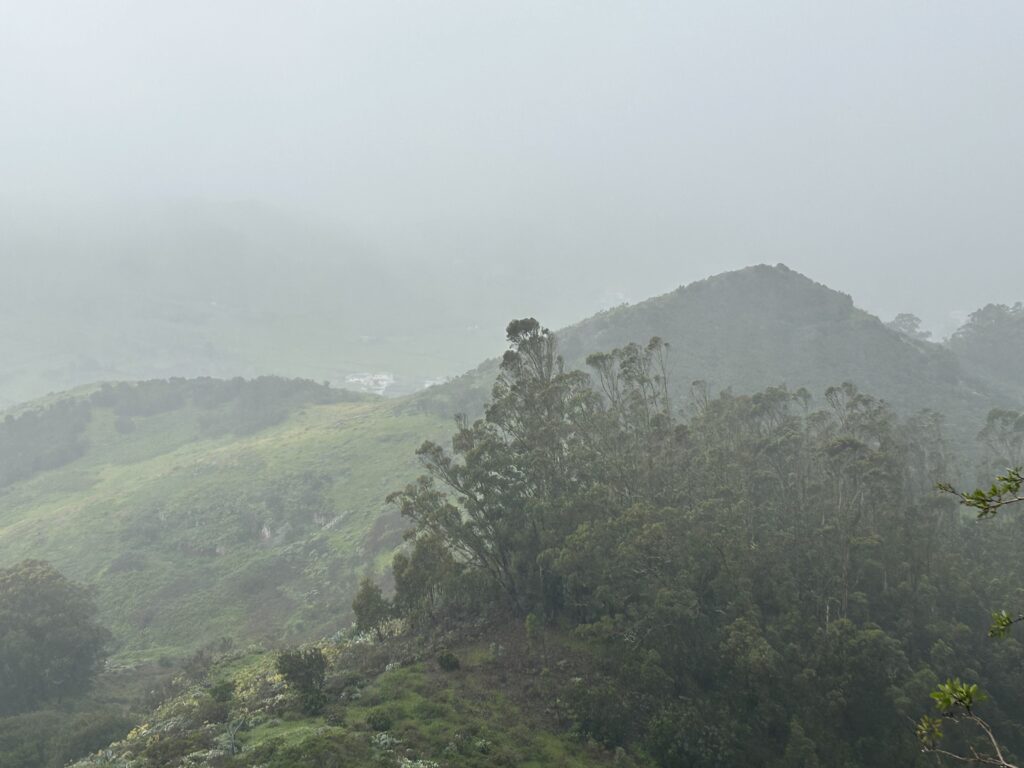
The Anaga forest is one of the most beautiful a Laurel Forests in In the Canary Islands. It is in the northwestermost part of Tenerife and covers over 37,000 acres It is a Biosphere Reserve. As you enter the forest you feel like you are stepping into a fairy tale. The natural sceney includes laurels, lichens, willows, fayas, and other plants. There are also interesting geological formations such as rocks, cliffs, and ravines.
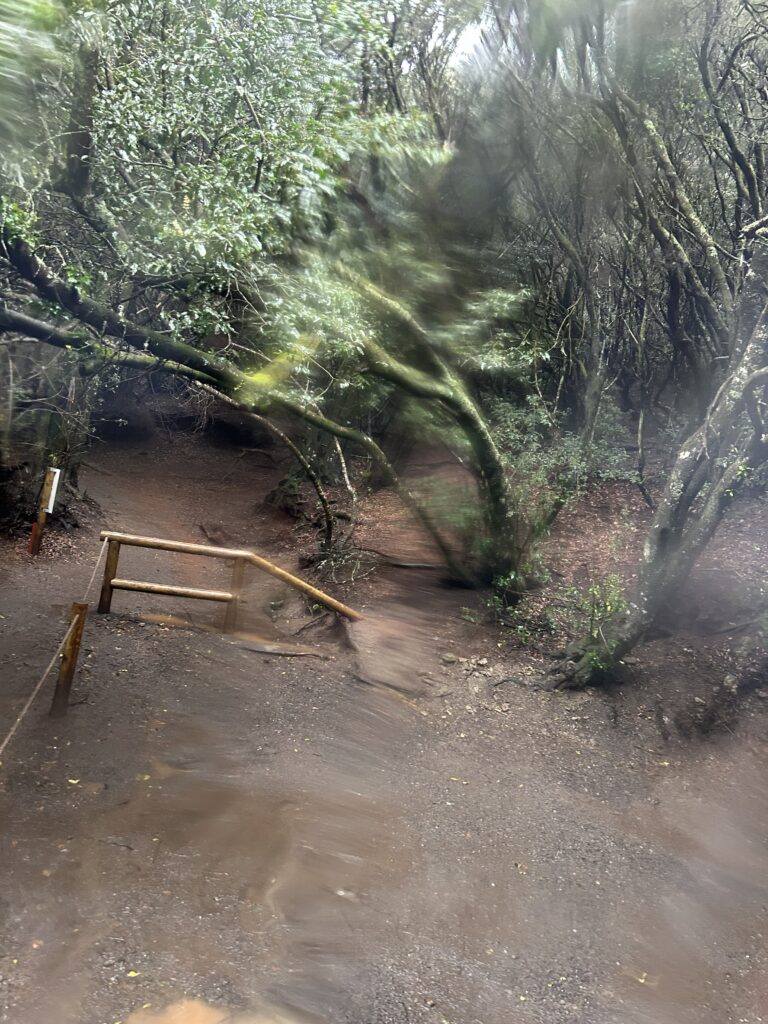
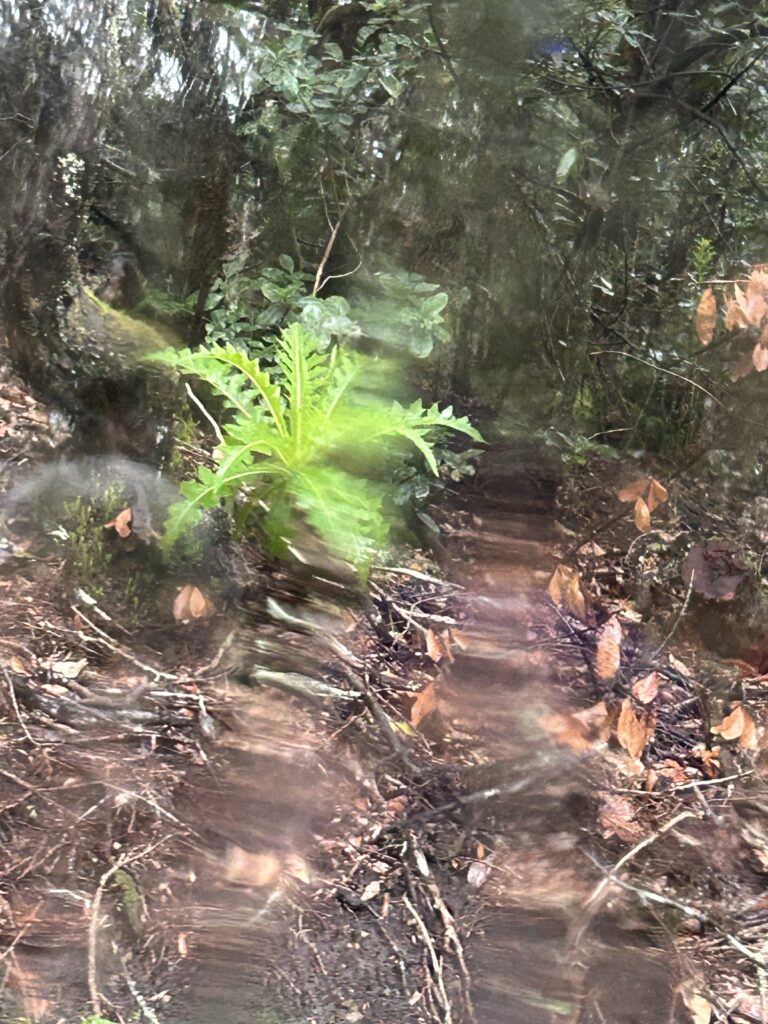
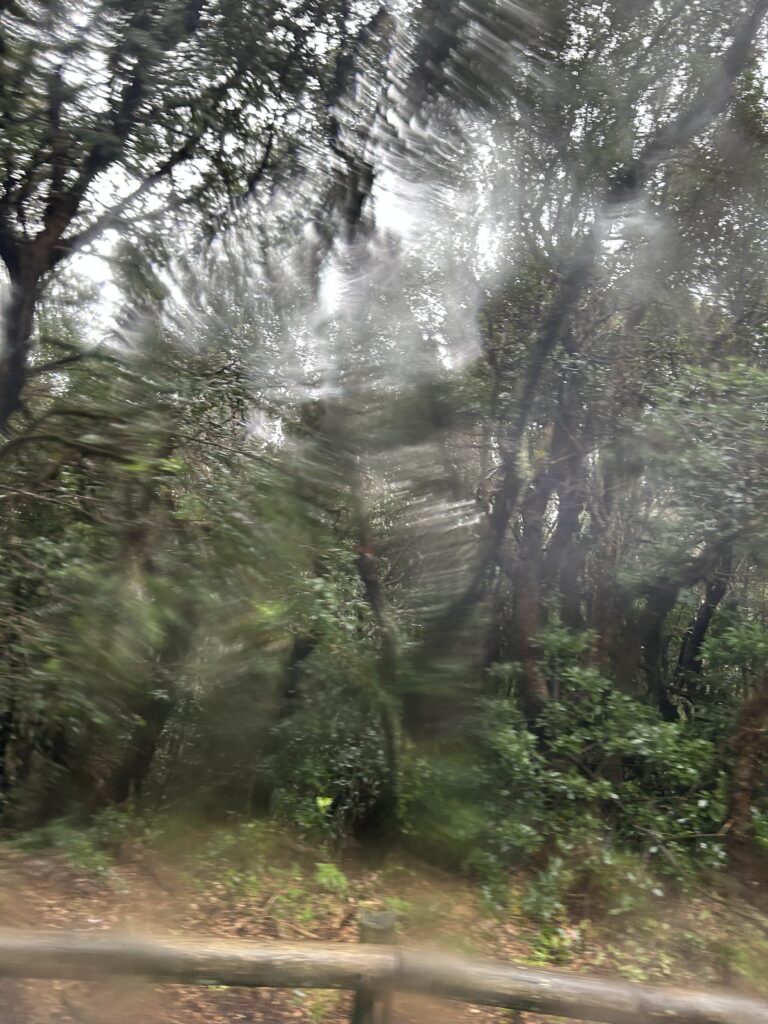
Then we went on through Las Mercedes forest, one of only three remaining sub-tropical laurel forests on the planet on our way to San Cristobal de La Laguna, Tenerife’s former capital.
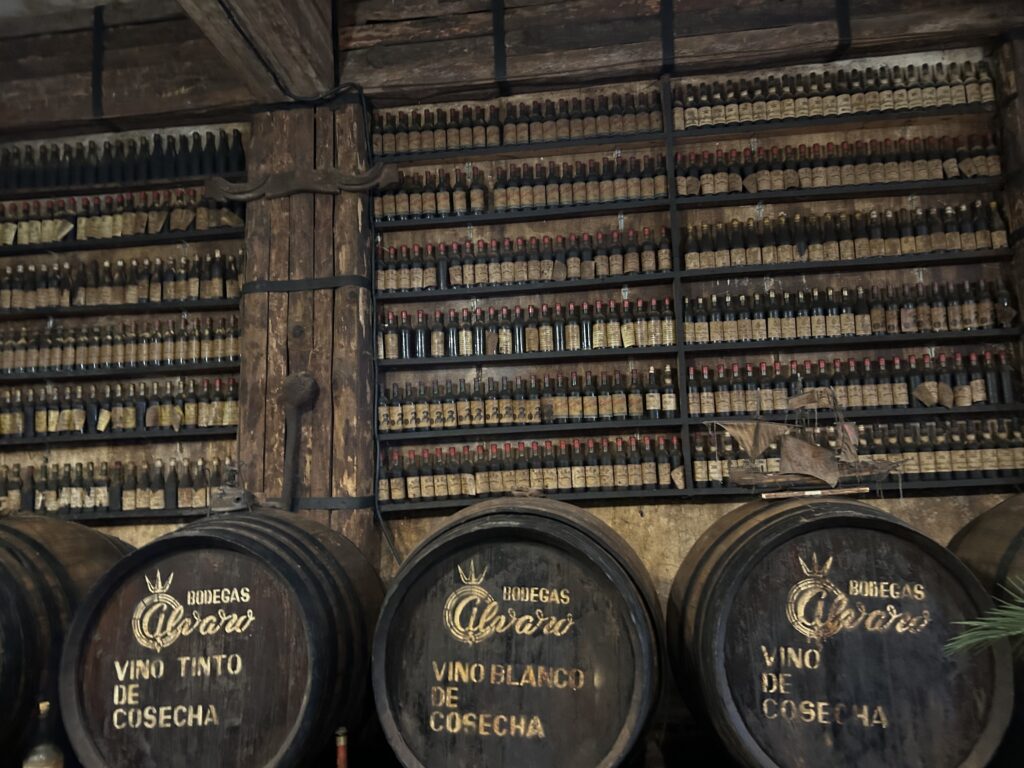
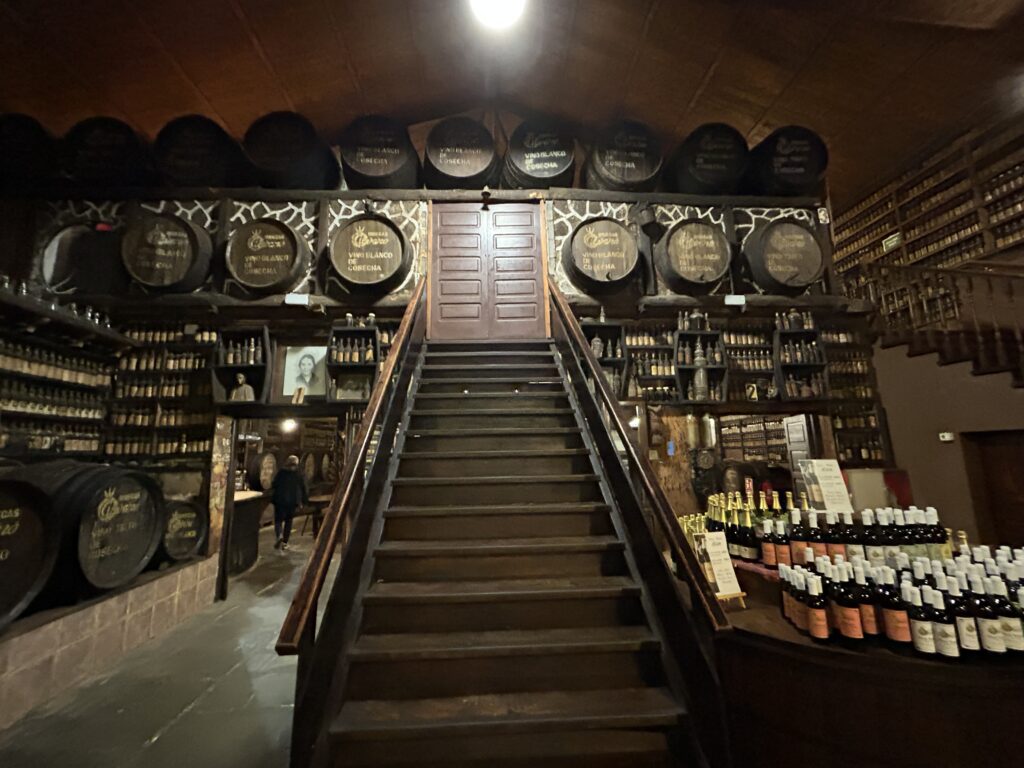
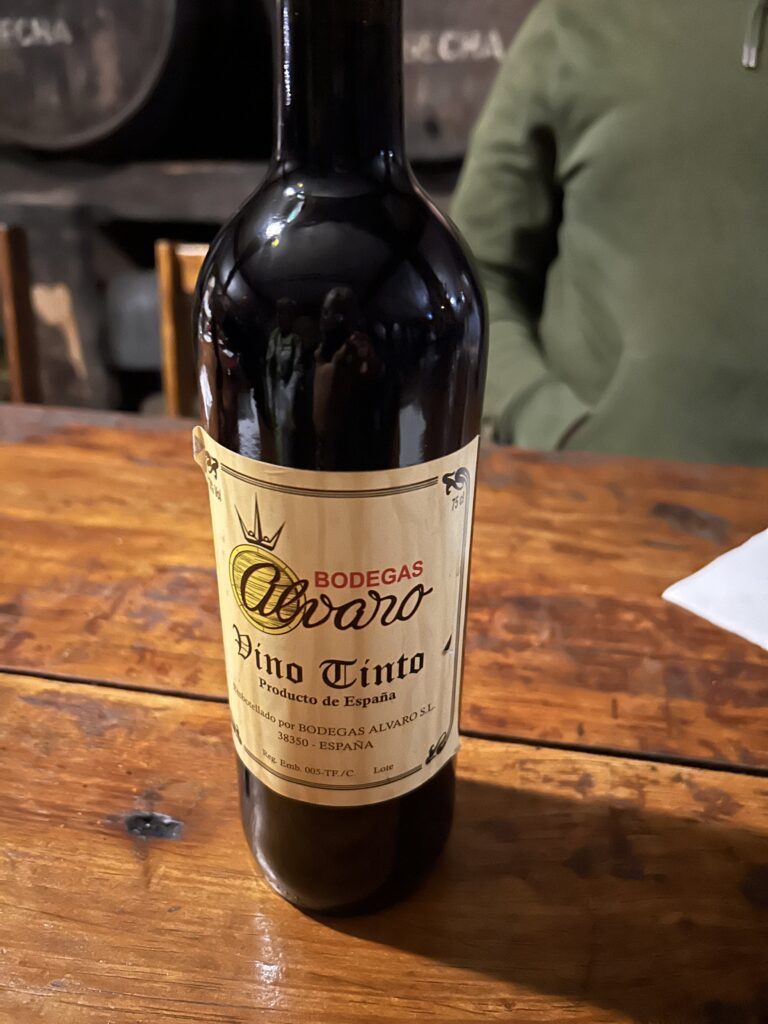
En route we stopped at this local winery in Tacoronte for a snack and wine tasting.
La Laguna is the oldest city on the island and is a UNESCO World Heritage Site. The city’s and architecture and current layout date to 6th century. In 1723 the capital was switched from here to Santa Cruz de Tenerife. It is sometimes called the Florence of the Canary Islands because of the many churches and convent. Now it is the third most populous city in the Canarias. Here, we had a walking tour.
Casa Salazar A Baroque Palace, one of the most outstanding examples of Canarian architecture.
Convent of Santa Cataline de Siena. Dominican order; hosting the preserved body of Maria de Leon Bello y Delgado. Founded in 1606

This is the Convent of Santa Catalina de Siena. Founded in 1606, It is a convent of the Dominican order that hosts the preserved body of Maria de Leon Bello y Delgado. Originally it was the palace of Adelantado.
The Cathedral of San Cristóbol de La Laguna is a UNESCO World Heritage Site. Its current structure was built between 1904 and 1915 in the Neoclassic and Neo Gothic styles. It sits on site of an early 16th century chapel. Inside is an baroque altarpiece of the Virgin of Los Remedios, the patrol saint of the city; seven painted panels are attributed to the Flemish master Hendrick van Balen; and marble 18th century pulpit carved by the Genoese master Pasquale Bocciardo.
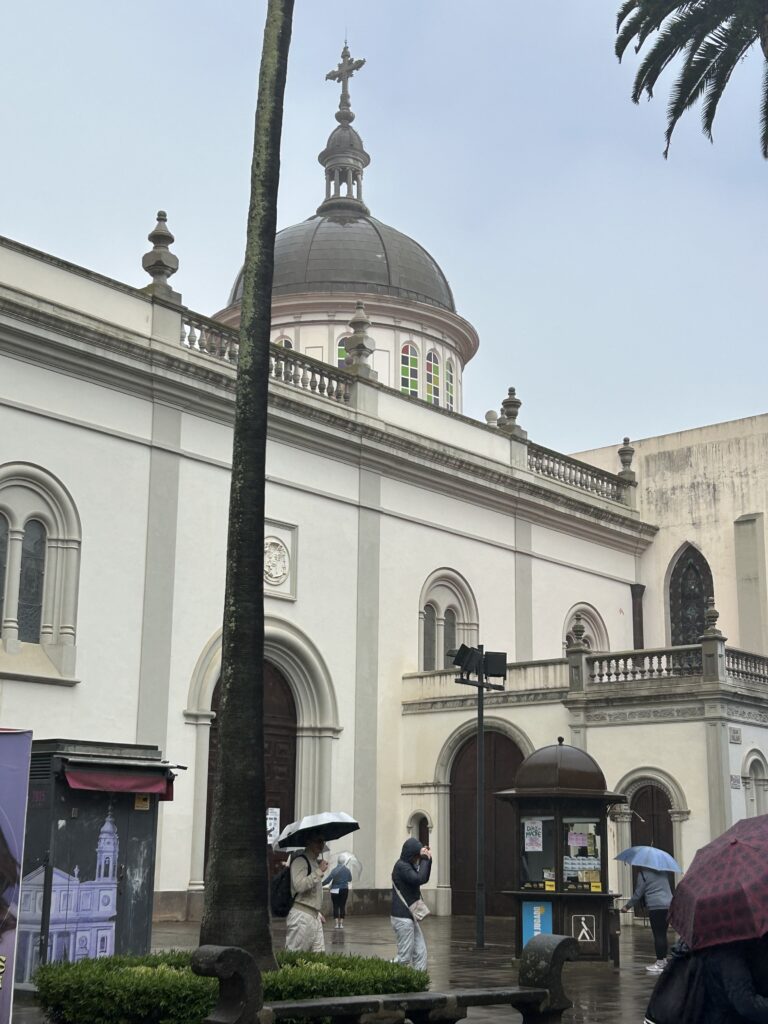
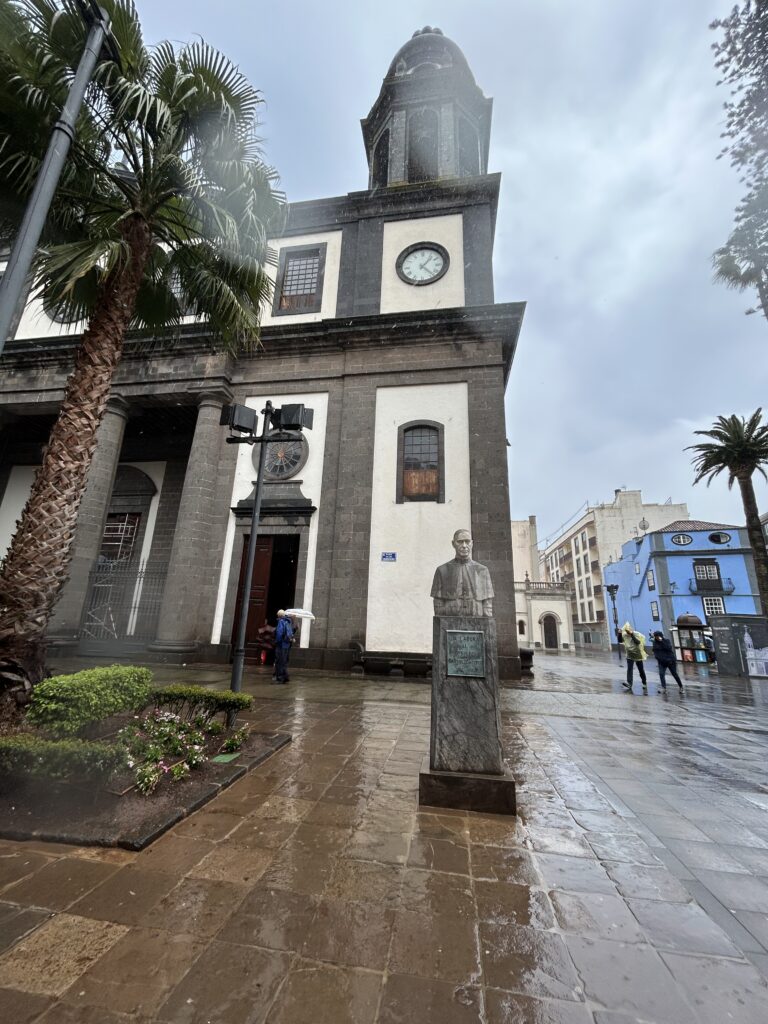
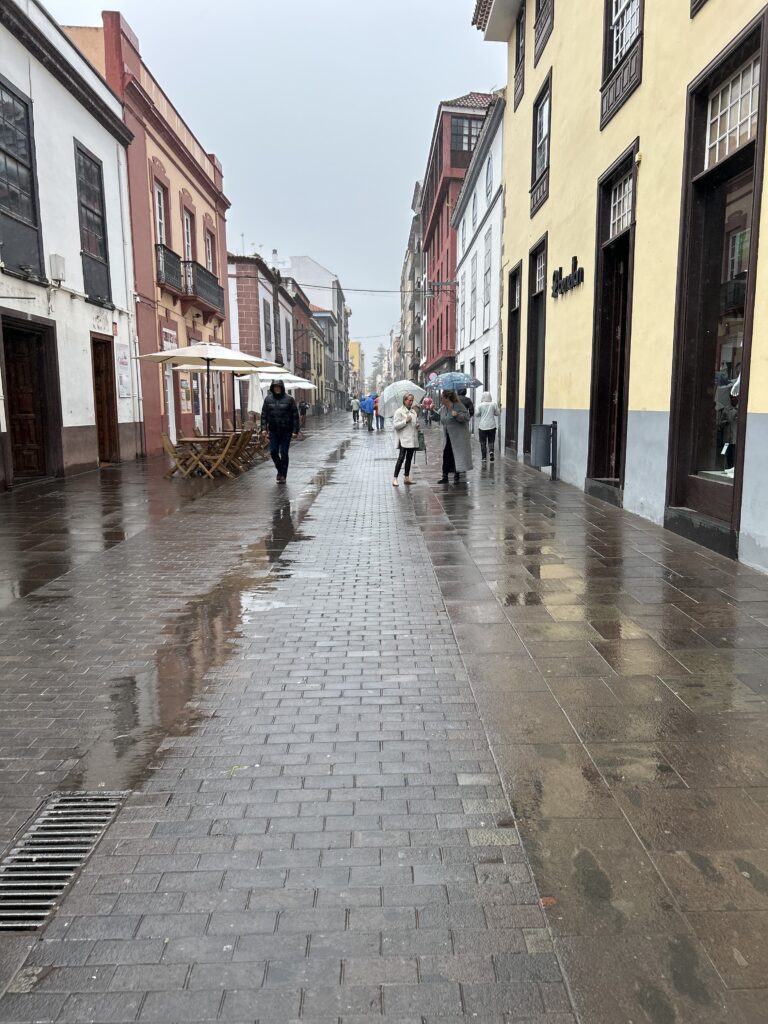
Part of the complex, the most important religious building in the city is the Royal Sanctuary of the Christ of La Laguna, which houses the Cristo de La Laguna, one of the most venerated artifacts in the Islands and a symbol of the city.
Because it was pouring, the walking tour was cut short, so we had time for the authentic Canary Islands coffee drink: Barraquito Coffee.
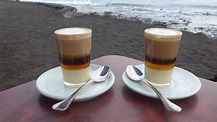
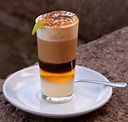
The Barraquito is a Cortado leche leche with Liquor 43 as a second layer as well as some lemon and cinnamon on the top. You can also ask for a Barraquito sin alcohol if you want a Cortado leche lechewith lemon and cinnamon but without the Licor 43. The Barraquito is served in a bigger cup than the Cortado.
After coffee, the rain had lessened and I wandered down the street to the Plaza Adelantado. The plaza is named after the island’s conquerer, Adelantado Alonso Fernández de Lugo. Standing around it are buildings of such significance that this became the scene for many public ceremonies from the 16th to the 20th century. Its first paving stones were laid in 1793, and then in 1843 it was fitted with lovely garden areas. Its beautiful fountain made of marble was commissioned from a French workshop and placed in the middle of the square in 1870. There is also a statue to the Adelantado. Today the Convent of Santa Catalina is on one side, the town hall on another with the municipal courts and the Ermita de San Miguel Arcángel.
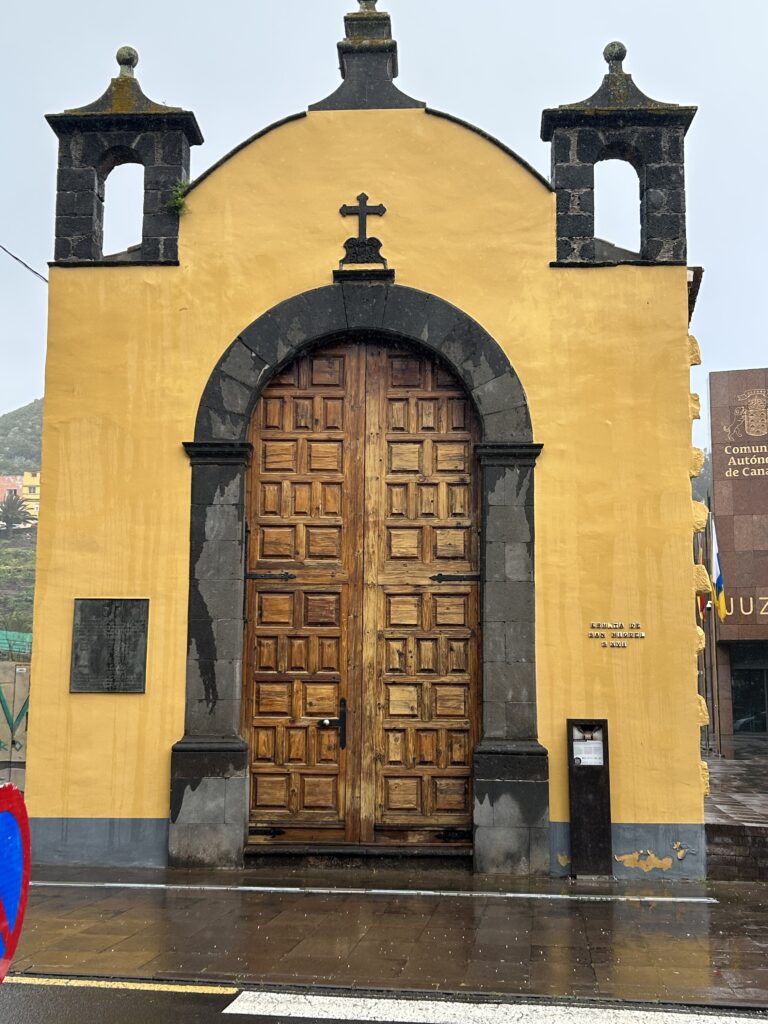
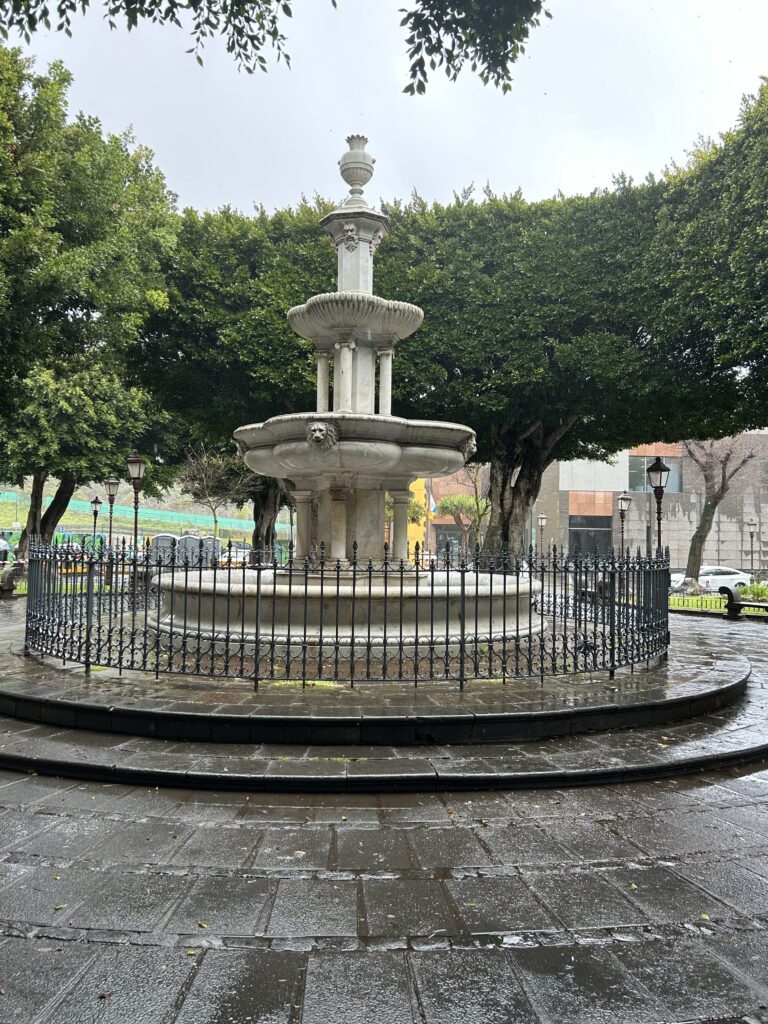
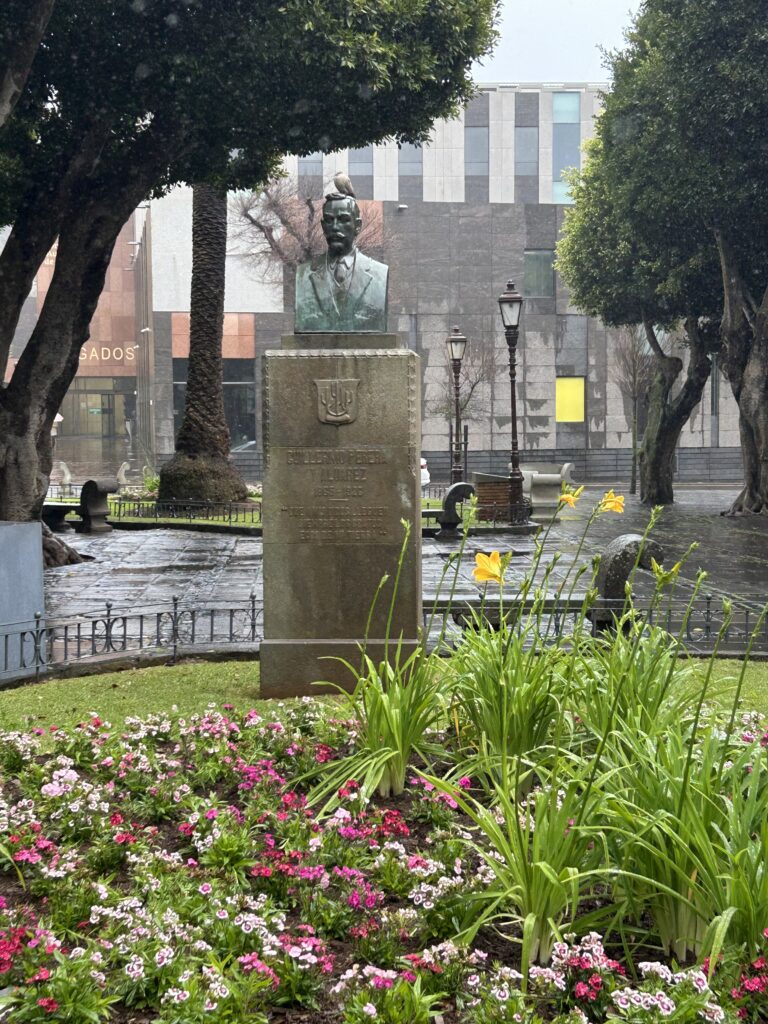
After our stay in La Laguna, we returned to Santa Cruz. As we neared the port we were able to view the Clock Tower, the Tower of the Church of the Immaculate Conception and the Ermita of and the modern concert hall, all close to the port.
The Church of the Immaculate Conception sits in the center of the old town. Many statues and relics are held there, including on of the most famous historical relics–the Santa Cruz de la Conquista. This cross was nailed in the ground when the first Adelantado landed and founded the city.
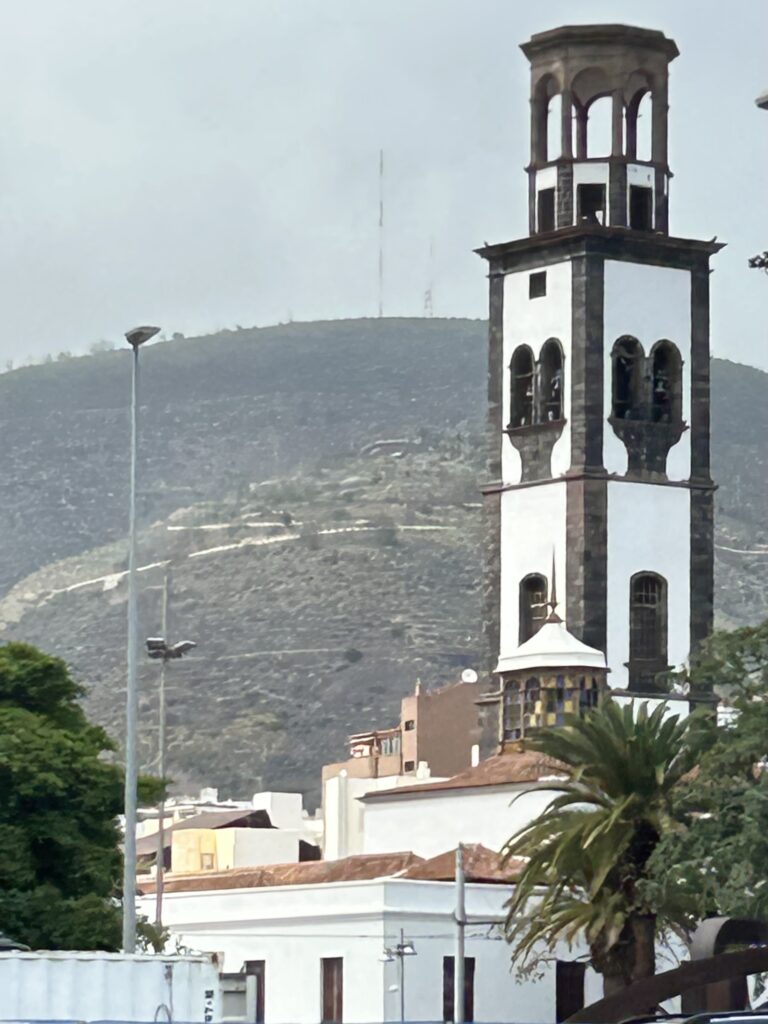
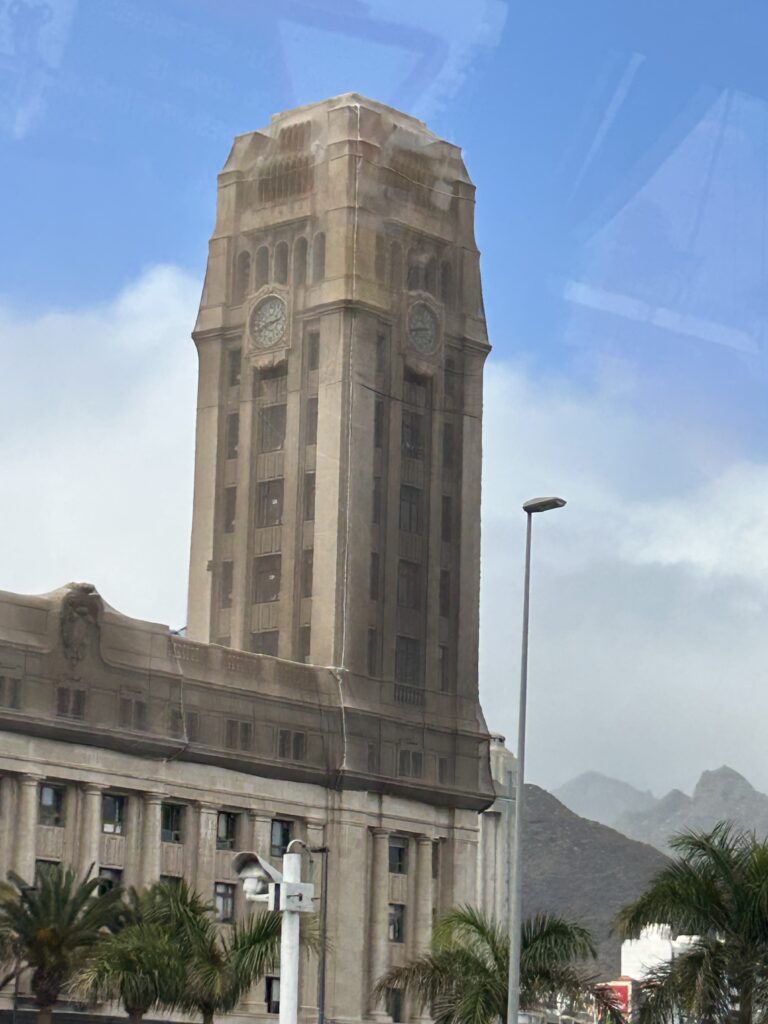
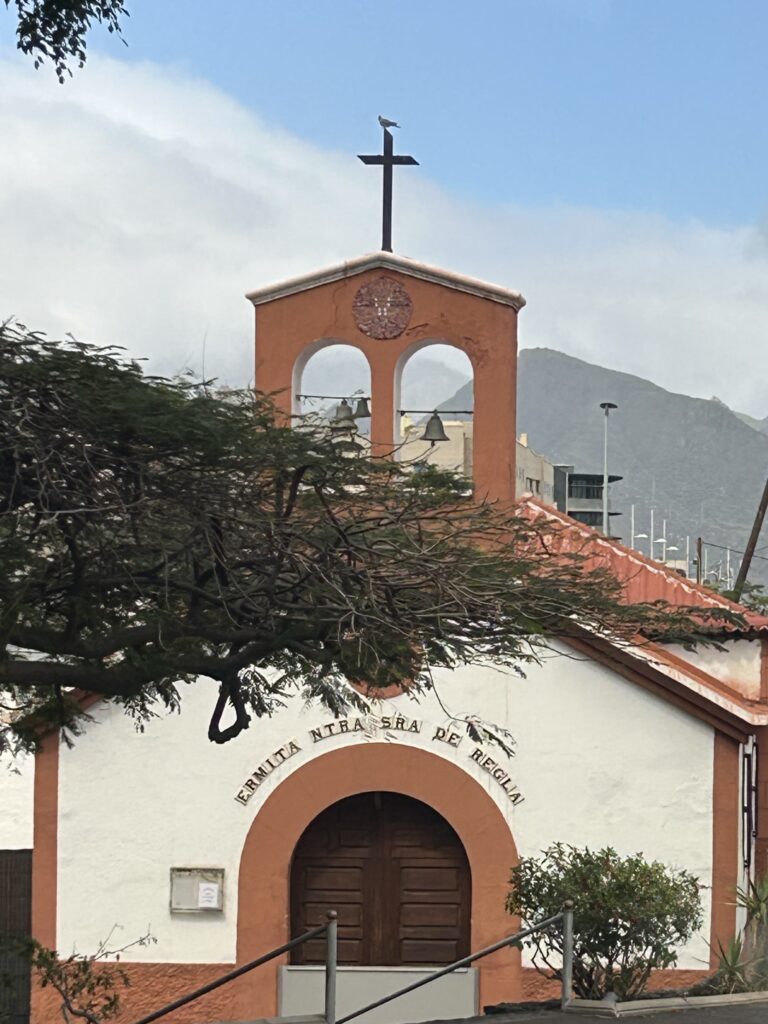
The Ermita de Nuestra Senora de Refla sits across from the new Concert Hall. It served as the garrison chapel of the Castel of San Juan, constructed in 1643.
The clock tower above marks the entrance to the Mercado Nuestra Señora de África. The building is very attractive, with a clock showing on all four faces. The market is in North African style with booths of fruits, cheeses, vegetables and meats of all kinds.
This modern concert hall/opera house on the right was finished in 2003. It was opend by Prince of Asturias Felipe de Borbón and his mother Queen Sofia. The architect was Santiago Calatrava. It has become an architectural symbol of the city.
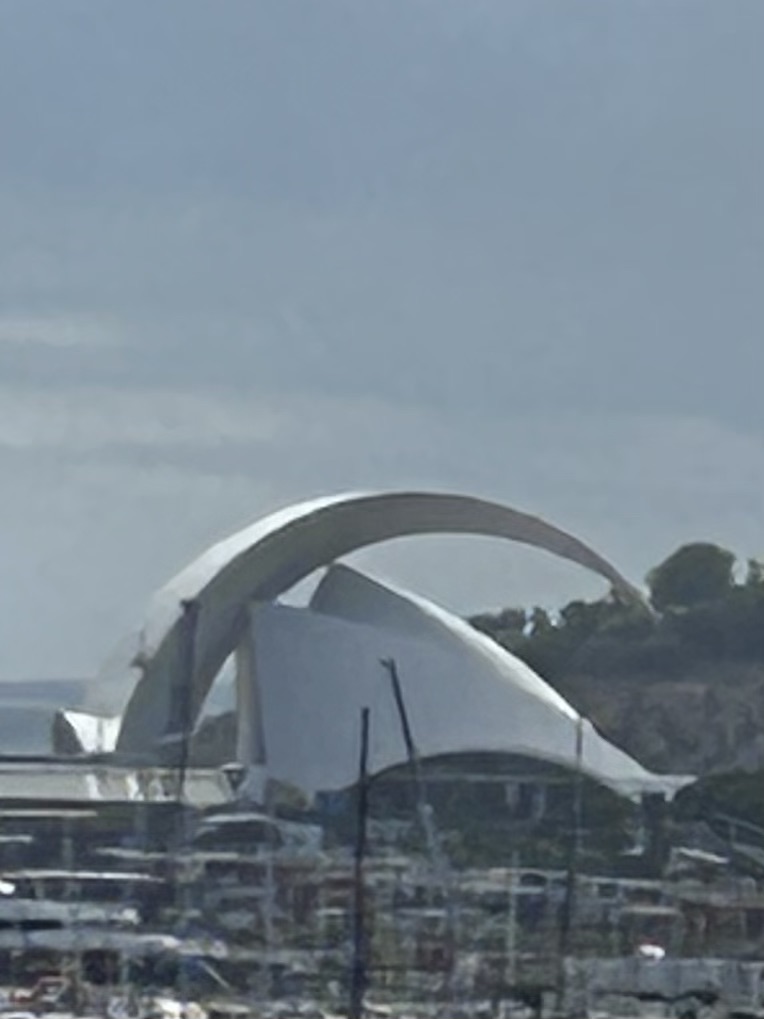
As we sailed from port, we could see the mountains in the background.
Leave a Reply